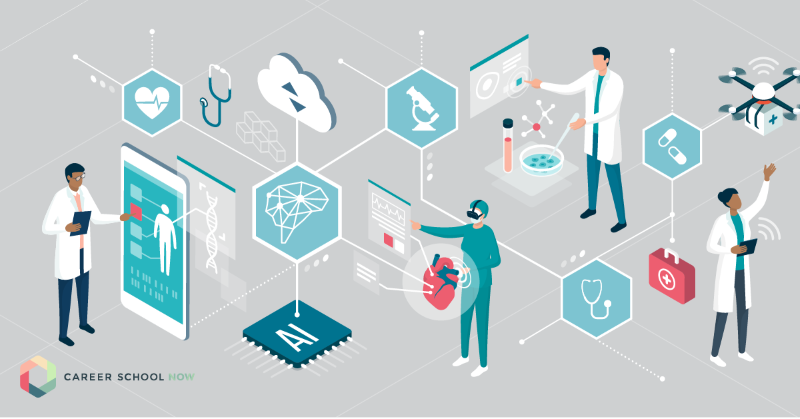Comprehending the Trick Functions and Duties in Medical Administration
Comprehending the Trick Functions and Duties in Medical Administration
Blog Article
Ideal Practices in Medical Management for Improving Effectiveness and Minimizing Prices
In the ever-evolving landscape of health care, the quest of best techniques in medical administration is vital for improving efficiency and curbing expenses. By integrating sophisticated modern technologies such as digital wellness records and telemedicine, health care providers can simplify procedures and boost individual treatment. However, modern technology alone is not a remedy; maximizing source allowance and promoting collective communication among treatment groups are equally vital (medical administration). As organizations strive to stabilize top quality and price, what approaches should be prioritized to attain these twin objectives? The response to these concerns hold the key to an extra lasting health care system.
Leveraging Advanced Modern Technology
In today's rapidly developing healthcare landscape, leveraging advanced innovation is no more optional but crucial for effective medical administration. The integration of electronic services right into medical care systems has changed the way facilities run, streamlining processes and improving person care. Electronic Wellness Records (EHRs) are pivotal, giving detailed person information that can be accessed instantly by authorized workers, thus reducing redundancy and decreasing errors. By streamlining individual details, EHRs get rid of the demand for cumbersome paperwork and help with smooth interaction amongst doctor.
Telemedicine is another technological advancement that has actually transformed patient communication. It supplies benefit for both clients and health care professionals by making it possible for remote examinations, which can minimize the requirement for in-person gos to and optimize consultation organizing. In addition, telehealth systems can extend medical care access to rural or underserved locations, bridging gaps in treatment delivery.
Furthermore, the use of Artificial Knowledge (AI) and device understanding is coming to be significantly common in anticipating analytics, enabling early detection of possible health and wellness concerns and more enlightened decision-making. These modern technologies, when integrated effectively, can enhance analysis precision and customize individual treatment strategies, inevitably resulting in boosted health care results and functional effectiveness.
Optimizing Resource Appropriation
Effective resource appropriation is vital for making best use of the performance of medical administration. By purposefully taking care of resources such as workers, equipment, and finances, healthcare facilities can dramatically enhance their functional performance, boost client results, and minimize unneeded expenditures. The initial action in maximizing source allotment entails carrying out a thorough evaluation of existing possessions and recognizing areas where sources might be underutilized or exhausted. This analysis must be data-driven, making use of metrics and analytics to notify decision-making procedures.
Focusing on source allocation based on individual demands and service needs is important. Carrying out adaptable staffing versions can also maximize labor sources by adjusting personnel appropriation in action to rising and fall patient volumes.
Economic sources ought to be meticulously monitored and allocated with strategic insight to sustain both temporary operational needs and long-lasting institutional goals. This consists of investing in training programs that enhance personnel expertises and taking on energy-efficient techniques that reduce operational prices (medical administration). Eventually, an optimized resource appropriation technique fosters a sustainable medical care atmosphere that is responsive, efficient, and economically prudent
Streamlining Operations Procedures
When healthcare centers objective to boost operational effectiveness, improving process processes comes to be a crucial emphasis. Efficient process lessen redundancy, get rid of unnecessary steps, and boost sychronisation amongst healthcare specialists. This method not only accelerates solution delivery but also boosts the quality of patient treatment.

Next, technology combination plays a significant function in simplifying workflows. Applying electronic health and wellness records (EHRs) Resources and computerized medical professional order entry (CPOE) systems decreases documents, minimizes human error, and guarantees details is accessible to all appropriate personnel. Additionally, leveraging telemedicine systems can improve client assessments and follow-ups, decreasing the stress on physical infrastructure.

Ultimately, streamlined process bring about set you back reductions and boosted person satisfaction, cultivating a more lasting health care setting.
Enhancing Data Monitoring
Structure upon structured content process, enhancing information management becomes a crucial component ahead of time medical care management. Reliable information administration systems are crucial for maintaining accurate individual documents, improving decision-making, and guaranteeing compliance with regulative standards. By implementing robust data management remedies, medical care facilities can improve the quality of person care while at the same time minimizing operational costs.
One key facet of boosting information management is the integration of advanced electronic wellness document (EHR) systems. These systems assist in the seamless exchange of individual information throughout different divisions, minimizing duplication of examinations and lessening errors. A properly designed EHR system sustains data analytics, making it possible for doctor to identify fads and make informed decisions relating to client treatment.
Furthermore, protecting individual information is vital. Taking on comprehensive cybersecurity measures, including encryption and normal audits, makes certain the stability and privacy of delicate information. This not just shields clients however likewise keeps the institution's online reputation.
Investing in personnel training is one more crucial element. Enlightening health care specialists on data administration techniques improves their capacity to properly use innovation, leading to improved individual end results. In final thought, boosting information monitoring with advanced modern technology click now and extensive training is important for accomplishing efficiency and price reduction in clinical administration.
Fostering Collaborative Communication
An important part in advancing medical administration is fostering collective communication amongst health care specialists. Effective interaction is extremely important for making certain smooth person treatment, optimizing therapy end results, and reducing mistakes. By encouraging open discussion and control throughout multidisciplinary teams, medical care companies can improve their operational efficiency and minimize unneeded prices.
Central to this approach is the combination of communication technologies such as digital health documents (EHRs) and safe messaging systems, which promote the quick exchange of essential individual details. These tools enable doctor to accessibility and share information in real time, making sure that all group members are educated and aligned in their decision-making processes. Routine team meetings and interdisciplinary rounds can further promote a culture of cooperation and responsibility.
Educating programs concentrated on improving communication skills are likewise crucial. Inevitably, cultivating collective communication leads to improved healthcare delivery and cost savings.

Verdict
Incorporating sophisticated technology, such as electronic health records and telemedicine, along with maximized resource appropriation and structured process procedures, is essential for improving effectiveness in medical management. Efficient data administration and fostering collective communication amongst medical care groups are essential for reducing redundancies and improving care quality. By focusing on precautionary treatment and participating in quality renovation initiatives, health care companies can achieve substantial expense financial savings and boosted individual results, thereby making sure lasting medical care delivery in a progressively intricate environment.
Report this page